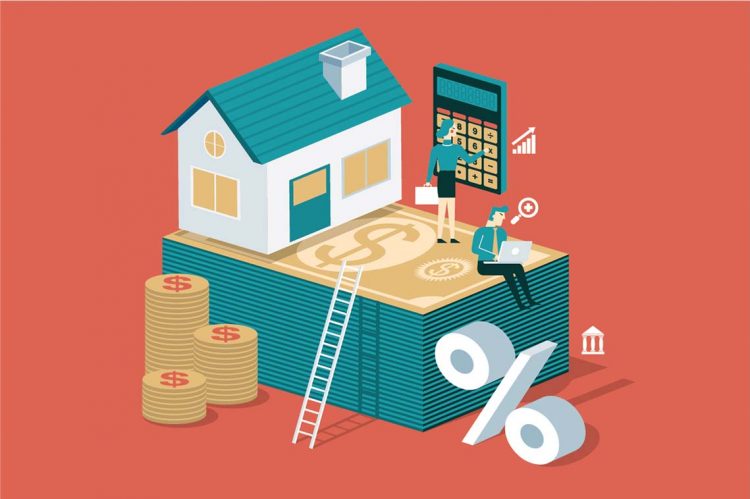Affordability is a huge issue—maybe the biggest and most urgent facing the housing industry today. That is rarely disputed, but one question that divides many experts and observers is how to define it, with no single standard or hard line to show when housing is unaffordable.
In a new paper published in the journal Housing Policy Debate, researchers at Harvard’s Joint Center for Housing Studies (JCHS) are seeking to examine affordability not using the cost of housing, but instead starting with every other expense—an approach called the residual income model. Specifically looking at renters, the researchers found that a significantly larger number of families were struggling or compromising on expenses compared to what other models found.
Out of a sample of 30.9 million households with working-age adults, almost two-thirds (19.2 million) were found to be cost-burdened.
“On average, households need more than $40,000 per year to cover their non-housing expenses,” wrote Whitney Airgood-Obrychi, one of the paper’s authors, in a statement. “And even the smallest household in the most affordable county in the U.S. would need at least $18,000 to cover their non-housing expenses.”
The best way to address this burden is through housing and transportation interventions, according to the researchers, which could cut the residual income deficit in half on average and give millions of people a chance at upward mobility.
The data comes from before the pandemic, the researchers noted, and it is unclear how many more families have become burdened, or more burdened in the last two years due to rising rents and home prices.
Most analyses and data use the flat cost of housing to calculate affordability. When a family is spending more than 30% of income on housing, they are deemed to be living in unaffordable conditions.
The limitation of this method, Airgood-Obrycki says, is that it treats all households equally. A family with five children and a hefty student loan balance would not be cost-burdened if they spent under 30% of their income on housing, while an individual with no children and no major non-discretionary expenses would be cost-burdened purely based on housing expenses.
Using data from the Economic Policy Institute’s Family Budget Calculator, Airgood-Obrycki and the other researchers concluded that likely many more families than previously identified are falling short of a “comfortable standard of living,” unable to save up for something like a down payment.
Solutions
Because housing is so important for stability, and owning a home is one of the most reliable ways to build wealth, policymakers have formulated a number of different strategies to get around obstacles created by high land costs, restrictive zoning and racial inequities.
Ashley Allen is the executive director of the Houston Community Land Trust. She leads a program that works with lenders to subsidize mortgages for existing homes (both down payment and closing costs included) while keeping the properties affordable as trusts in perpetuity, allowing families to build equity with a much smaller loan (usually under $100,000).
“An affordable mortgage helps pay off debt, it helps prevent from going into debt, it helps pay off student loans, it helps pay off medical bills, it helps people put money in 401ks,” Allen explains.
Ideally, many of these owners will move on into the traditional market after building some equity in the subsidized home, according to Allen, and their old home can then be purchased by another lower-income person, creating a permanent step up for families on the cusp of homeownership.
This type of program is particularly vital for families of color, and Allen says she understands as a Black woman and homeowner that there are systemic barriers preventing many in these communities from reaping the benefits of homeownership, especially in their own neighborhoods.
“Communities, particularly Black communities, don’t start to see appreciation until it starts to gentrify. But then at that point you’ve already pushed the people who were originally there out, so they never get to see that value,” she says.
Black and Hispanic families are also more likely to be residual-income burdened, according to the Harvard study.
While a handful of jurisdictions are trying similar models to Houston, their footprint is relatively small right now. Other proposed strategies to bring down housing costs include building more ADUs, townhomes or duplexes.
While policymakers in some regions have made efforts to encourage this type of building, Danielle Hale, chief economist for realtor.com, told RISMedia earlier this year that new housing stock will not meet the needs of lower-income families anytime soon.
“I don’t expect to see a lot of entry-level building ,” she says.
According to the Harvard researchers, a direct subsidy for housing would be most beneficial for households on the cusp of residual-income burden—those making $30,000 to $46,000. Holding housing costs steady at 30% of total income could bring more than half a million renting households out of that residual-income burdened status, potentially setting them up for homeownership.
Combined with transportation subsidies or increased investment in public transportation, approximately 2.4 million renters would be lifted out of that status, according to the study.
“Ultimately, housing unaffordability is only one part of the equation,” the researchers conclude. “For many renters, incomes are just too low to meet all basic needs, and the cost of a comfortable lifestyle is out of reach without income supports.”
 Jesse Williams is RISMedia’s associate online editor. Email him your real estate news ideas, jwilliams@rismedia.com.
Jesse Williams is RISMedia’s associate online editor. Email him your real estate news ideas, jwilliams@rismedia.com.












